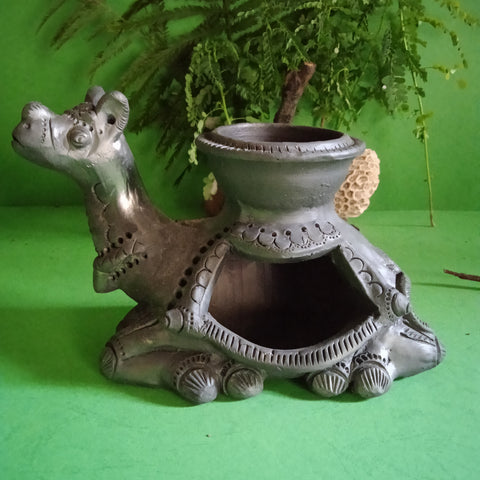Black Pottery of Sawai Madhopur: A Timeless Craft
The art of pottery has been an integral part of human civilization for thousands of years. From functional vessels to intricate decorative pieces, pottery has evolved into a diverse and cherished art form across the globe. In the heart of Rajasthan, India, lies the town of Sawai Madhopur, renowned for its unique and exquisite black pottery. This traditional craft has not only preserved its cultural heritage but has also become a significant source of livelihood for the local artisans. In this article, we delve into the history, techniques, significance, and future prospects of the black pottery of Sawai Madhopur.
Techniques and Process
The black pottery of Sawai Madhopur is characterized by its unique black color, which is achieved through a meticulous firing process. The clay used for making these pots is sourced from nearby regions and is known for its high iron content. The clay is first kneaded thoroughly to remove any impurities and air bubbles. Once the desired consistency is achieved, the potter skillfully shapes the clay into various forms using a potter's wheel or hand-building techniques. After shaping, the pottery is left to dry naturally in the shade for several days. Once dried, the pots are carefully polished using smooth stones to achieve a smooth and shiny surface. The final step involves the firing process, which is the most crucial and defining aspect of black pottery. The pots are stacked in a specially designed kiln and fired at high temperatures for several hours. The unique black color is a result of the reduction firing technique, where oxygen is restricted during the firing process.
You can find exquisite pieces of these craft on www.prosperitymirra.com 











